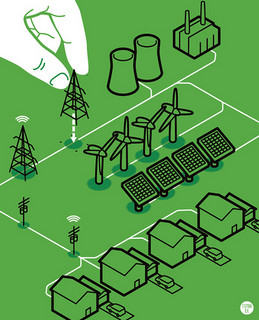In the process of improving our fitness, we must set goals. It’s easy, however, to set goals that are too lofty. We want to do it all. We want to burn fat, gain strength, and build muscle. All too often these desires work against us. Since we want it all we try for it all at once, and we fail on all fronts. We get frustrated that we don’t have a six pack, bulging biceps, and superhuman strength after just a few months. This is the point, as you might imagine, when many fitness routines die. But it doesn’t need to be that way.
Smart Fitness options - image by James Provost
Starts with the goals
A fitness plan without clear goals will probably lead only to failure. There are exceptions, of course. Some people have a knack for thinking on the fly. Most of us, though, will succeed only if we know what we’re striving for. It’s important, then, to not only set goals such as growing muscle, but also to understand why we’re setting these goals. It’s the motivations that will allow us to employ a smart grid system for training.
If your goals are to gain strength, grow muscle, and lose fat, that’s perfectly fine. They’re admirable goals for anyone. But just understand that they’re difficult to achieve in unison. Some gains come at the expense of others. Isn’t that exactly what the smart grid does? While you’re growing muscle, you’ll have to pull from your fat-burning and strength-gaining goals. But soon enough you’ll redirect that energy towards your other goals, pulling from your muscle-growing one.
Working in tandem
Just because a smart grid focuses on one area over the rest does not mean that it completely neglects the other areas. That would be something, wouldn’t it? We’d have entire areas of cities blacked out, because another area needed more power. No, smart grids redirect only some of the energy from one area to another. It still keeps all areas powered at all times, though. That is to say, you shouldn’t completely neglect fat burning when you’re building muscle. You’ll just pay it a different level of attention.
For instance, when you’re building muscle chances are you’ll be working three days per week with low reps and heavy weights. That still leaves four days for you to work on other goals. True, building muscle requires more rest than a strength-building or fat-burning program, but that doesn’t mean you should still remain inactive for those four days. Maybe you jump on a treadmill and run intervals one day. Maybe you work on push ups and pull ups — not to failure — on another. They’re at a lesser intensity level and frequency than the muscle-building parts of the program, but they’re still present.
Smart grid fitness in action
When I set my fitness goals, they revolve around baseball. Every Sunday from April through October I play in an amateur hardball league. While we’re just there to have fun, part of the fun is actually being good: getting hits at the plate and making strong throws on defense. Since my motivation is baseball, I set goals that work with that in mind: gain strength, lose fat, improve balance. Those are the three pillars that will make me a better ballplayer.
After the season’s over I usually take a few weeks off, since there is little room to take a week off during the season. After that, it’s important to rebuild strength. And so I do a lot of bodyweight strength-building exercises, plus some kettle bell work, for the first four or so weeks of my off-season training. But at the same time I’m still running intervals to burn fat. I’m also making sure to work in exercises that work one side of my body, rather than the whole body — e.g., one-armed deadlifts. That helps keep my body balanced.
After gaining strength, it’s onto the fat-loss portion of the off-season. That means plenty of intervals (and since it’s wintertime, those are on the treadmill), stair-climbing, rowing, jumping rope, and circuits. But I’m also making sure to work in balance and strength exercises. Finally, as the season approaches I work on balance, meaning it’s all single-arm dumbbell and kettlebell exercises — with intervals and bodyweight strength exercises in there. Once the season starts it’s back to strength, and the cycle continues.
Anyone who works out is familiar, in some way, with the idea of periodization. But it’s not enough just to change what you’re doing every four to six weeks. There has to be a an overall structure to those changes. That is to say, it’s difficult to continue growing muscle forever, even if you do change the specific exercises every four weeks. Better to use periodization in the same way electric companies use smart grids. That helps you avoid the dullness of routine while always working towards your goals. And that’s really the big picture, isn’t it?





Want to discuss? Join the conversation CubeDwellerFitness's Facebook Page.